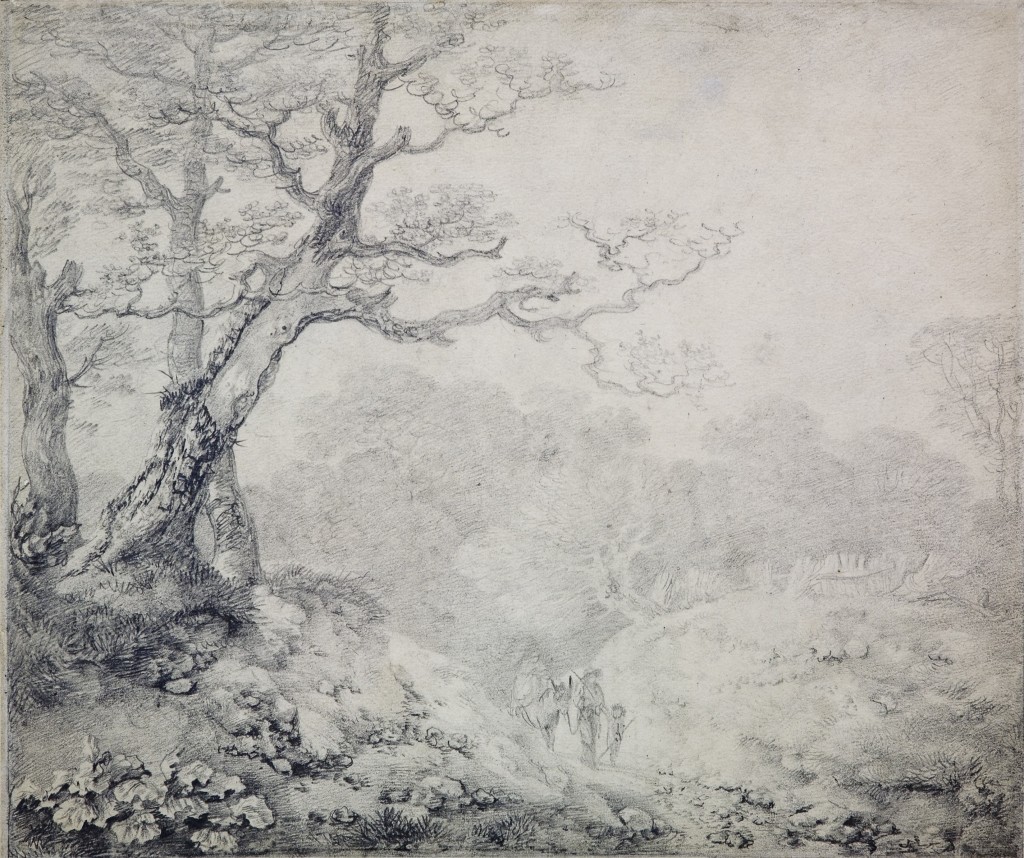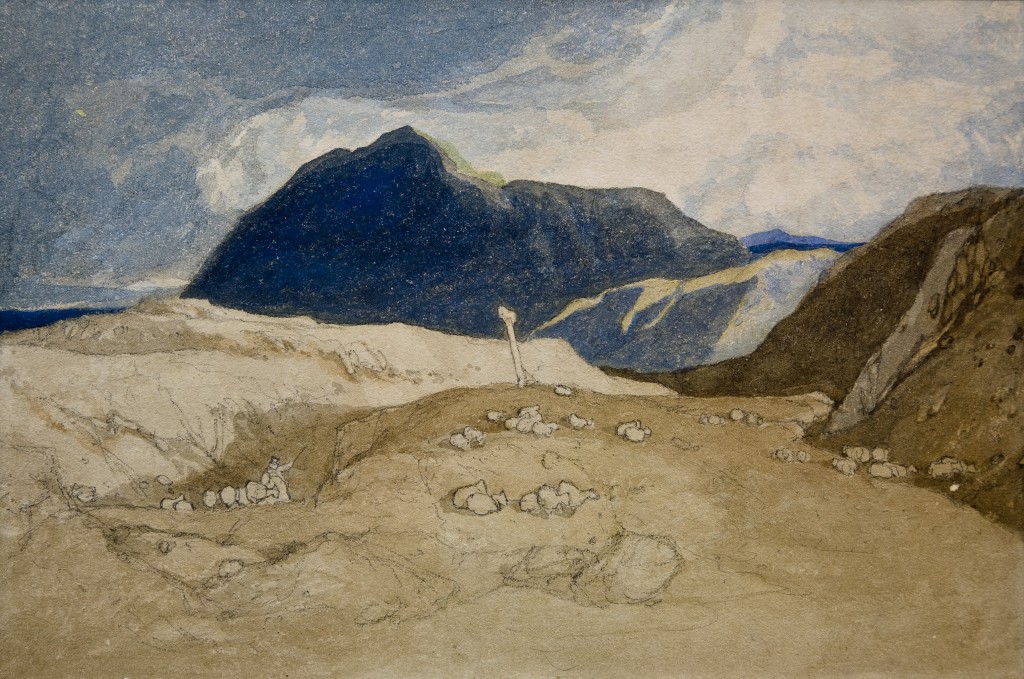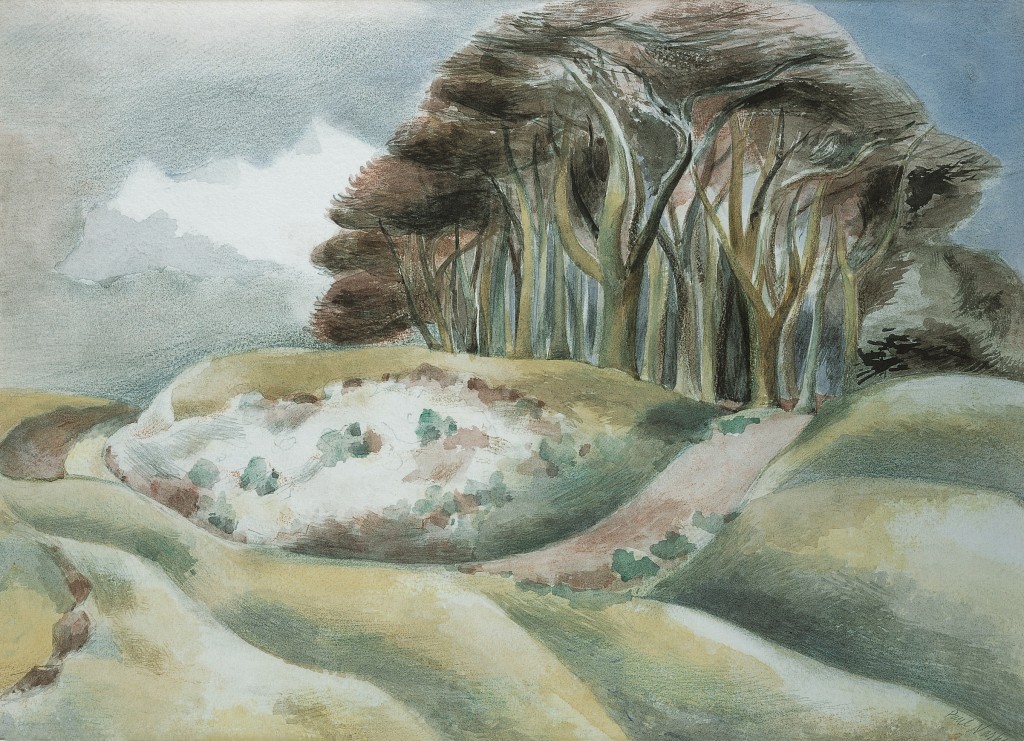
A new exhibition at Pallant House Gallery, ‘The British Landscape Tradition: From Gainsborough to Nash’, opens on the 11th May 2016 in the intimate environs of the De’Longhi gallery. It articulates the importance and procession of landscape art to our nation, with particular reference to watercolours and drawings.
The British landscape watercolour tradition of the 18th and early 19th centuries was a moment where our artists found their own unique and influential voice in European art history. The landscape tradition and romanticism grew out of recording the topography of the Grand Tour. A reverence for nature and the landscape emerged in the 18th century. As Wordsworth, wrote in 1798 ‘Nature never did betray the heart that loved her.’ As artists and their patrons returned from the Grand Tour they began to see our native landscape afresh through the eyes of the poet and the artist.
One of the earliest exponents of this tradition in Britain was Thomas Gainsborough. He often journeyed into the English countryside to sketch directly from nature, recording the picturesque. His delight in the scene, ‘A Suffolk Lane’, is complimented by the immediacy of this pencil sketch which, despite its apparent stillness, is filled with life.

It was Dr Thomas Munro who identified the genius of the artist John Robert Cozens. Munro was the chief physician at the Bethlem (Bedlam) Royal Hospital. Suffering a nervous breakdown after his work was rejected by the Royal Academy Cozens was committed to the Bethlem asylum. Munro encouraged him to paint as a form of therapy and would eventually buy Cozens’ collection of work.
Munro’s patronage had an influence on many of Britain’s leading artists of the time. J.M.W. Turner and his contemporary Thomas Girtin both worked in Munro’s informal academy in 1795. Turner was exposed to John Robert Cozens’ landscapes whilst at Munro’s and would later acknowledge the importance of these works on his own development as an artist. The exquisite watercolour of Greenwich by Cozens brings our senses alive in our imaginations as light and breeze play upon the trees and the horizon merges with the sky in that very English way.

John Sell Cotman also spent time with Munro. Cotman, a leading member of the Norwich School of artists, is celebrated for his use of blocked in colour, which is apparent in his landscape ‘Capel Curig’, which still seems modern to our eyes today.
The exhibition importantly displays how the procession of British artists working on paper continues into the 20th century. John Piper considered his fellow artist Paul Nash to be part of the romantic landscape tradition. Nash, however, like Gainsborough before him, was keen to emphasise the ‘poetic’ in his work. He sought to look beyond the immediate to what he referred to as the ‘genius loci’, the spirit of the place, to ‘a reality more real’. Paul Nash was drawn to objects sculpted by nature, exemplified by the windswept trees in his landscape ‘Wittenham’. It serves to highlight the poetic nature of his painting and how firmly rooted he was in the English tradition.

The beautiful works in this exhibition allow us to see how British artists have sought to record our human engagement with nature and the landscape. These watercolours and drawings engage our senses and our emotions. They record not only places and things, but something of life itself.
‘The British Landscape Tradition: From Gainsborough to Nash’ runs at Pallant House Gallery, 9 North Pallant, Chichester, PO19 1TJ, from the 11th May to 26th June 2016. Thanks to the generosity of sponsors De’Longhi entrance to this superb exhibition is free. For more information go to www.pallant.org.uk or telephone 01243 774557.
By Rupert Toovey, a senior director of Toovey’s, the leading fine art auction house in West Sussex, based on the A24 at Washington. Originally published in the West Sussex Gazette.